--60h Singapore III Flying Boat (1936-41)
A recent addition of mine is a nice example of the 'Singapore' Flying Boat. This example dates of March 1940, as the box code BW 10M 3-40 indicates. My Dinky Toys catalogue is presently fully up-to-date, so every new acquisition will be catalogued without delay from now on. May be you like the comment that I included the other day. Any correction, addition and/or suggestion in order to improve my description is welcome, as always. Kind regards, Jan.
This 1/217 scale model of the Short S.19 Singapore III Flying Boat was introduced in the June 1936 issue of Meccano Magazine, being both the first flying boat model in the Dinky Toys aeroplanes range and the biggest aircraft model up to that moment. A parallel issue was the no. 60m Four-Engine Flying Boat, no. 60m, a many-coloured variation. Flying boats were exciting and fashionable in those pre-war years. They enabled easy landing at lakes and rivers in areas still short of airports. The Singapore III was followed by another four Dinky Toys flying boats: no. 60r Empire Flying Boat, no. 63b Seaplane Mercury, no. 63 Mayo Composite Aircraft and no. 60w Clipper III Flying Boat (and related derived models in a different finish). No. 63 was not fully new, being a combination of an adapted 60r (63a) and 63b.
The box’s lid mentions a lot of noteworthy facts about this model and its real-world prototype: “This splendid model is a realistic reproduction of the Short ‘Singapore III’, one of the fastest British flying boats, which has four Rolls Royce ‘Kestrel’ engines giving it a top speed of 145 m.p.h. It is of the unequal-span biplane type, the upper wing being of 90 feet span and the lower one of 76 ft. The overall length of the machine is 64 ft. 2 in.
The machine is designed for long-range open-sea reconnaissance duties and coastal patrol work, and can carry sufficient fuel for a non-stop flight of 1,000 miles at cruising speed. It has been adopted by the R.A.F. and supplied to several General Reconnaissance squadrons. Short ‘Singapore’ flying boats are used by the R.A.F. Iraq Command, which is maintained to defend British interests in that country and to prevent invasion. They are employed also by the Far East Command, for important survey and reconnaissance work and for preventing smuggling of arms”.
The fuselage of this model, its triple tail included, consists of one single casting piece only. The rest of the model, however, is rather complicated because of the way the bi-plane is constructed. Both wings are fixed together by eight attachment points on top, two double struts on the outside, extensions of the floats below, and on the positions of the twin engine units. Whereas the wings (wingspan 126 mm) are tin plate, the struts and engine units are diecast zamak. The four twin blade tinplate propellers, initially bare metal, got the same silver finish as the rest of the model in 1939. The large R.A.F. roundels on the tips of the upper wing were tampo stamped for some time – just the red and blue, the white in between omitted – until they were replaced by red/white/blue transfers in 1939. Lacking a proper landing gear, a big roller was applied underneath, within the hollow fuselage, held by an axle, crimped on both sides outside the fuselage. Contrary to the no. 60w PanAm Cipper III Flying Boat, which is a(n incomplete) waterline model, the ‘Singapore’ is a full hull model.
In 1940 a part of the bow’s underside was ‘opened’, a simplification of the diecasting job and reduction of the quantity of metal needed. This adaption was officially recorded 10 October 1939. Three holes, a rectangular one in front of the cockpit, a round one in the centre, protruding through underwing and fuselage, and another rectangular one near the tail, represent the gunners’ positions, equipped with their 7.7 mm Lewis guns. In 1940 the forward emplacement was provided with a seat, probably a little ‘trick’ for a better performance of the die after the change to the bow below. The upper wing may show a gliding game hole, which appeared in 1937 and was discontinued in 1940. Consequently, the scarce battle grey finished examples of that later period show no gliding game hole. The roller was not present either immediately at the moment of introduction, but it was introduced soon, in the same year 1936: red, green or yellow plastic ones initially, replaced by a wooden green example in the course of 1940. The tin plate made wings are rather exceptional, but not unique. As the model often suffers from fatigue, friction between the wings and the diecast parts may occur, with resulting damage to the model. Scarce earliest examples do not show this problem as their cast parts are made of lead.
Set box 61 contains the Singapore III Flying Boat as the principal, biggest model, accompanied by no. 60n Fairey Battle Bomber and no. 60p Gloster Gladiator pairs. The civilian Four-Engine Flying Boat, no. 60m, was issued in many various colours: light green, red, dark blue, dark green, gold, silver and mid blue, with individual large size (and fictitious) registration numbers on top of the upper wings. The silver no. 60m was a look-alike of no. 60h, the registration number – instead of the R.A.F. roundels – making the difference. In reality there never was a civilian version of this flying boat, it served military purposes only.
This model, in whatever version, was not re-issued after WWII. The real-world ‘Singapore’ was obsolete as soon as it entered service already and during WWII it served as a trainer, except for some minor war actions in the Far East. The Short S.25 Sunderland, its prototype having made the first flight as early as 1937, replaced the ‘Singapore’ in a very short time.
Jan--Another splendid article on a most interesting toy. I had virtually no prior knowledge of this model, so you have done a very nice job in describing both the prototype and the Dinky Toys model. What I find most interesting is the use of tinplate for the wings, in lieu of diecast. And that appears to be another wonderful example for your collection.....congratulations on acquiring such a wonderful example.
Best regards, Terry
Hello Jan,
Splendid information on the Singapore. The code on your box was not known to me, so BW 10M 3-40 is a welcome addition to the already 9 different varieties of boxes know to me. First 4 boxes had no date codes. Next were BW 8905 22M 4-38, BW 2503 12-5M 3-39, BW 5M 12-39, MW 11898 10M 5-40.
On the drawing for the Hull two change orders were made. Date 30-4-1936 two holes for the roller were added. Date 10-10-1939, core under cockpit altered. So the bow was made less profiled underneath, often indicated as seat in cockpit.
Another feature on the drawing is the engraving under the tail. Still on the drawing but never realized as the engraving was made on the tinplate wing. For further information on the Singapores and boxes see The Journal July 2013 pages 13-17.
John.
Thanks, John, for the extra information and especially for the reference to your article, which betrays that although my catalogue is up-to-date, my Dinky Toys bibliography is not (yet)!
Kind regards, Jan
Jan,
Your comprehensive article on this aircraft was most interesting and you have a very nice example of the Dinky model. I recently acquired one for myself which I believe may be an earlier version. The box has the code A2113, and the information about the aircraft is printed inside the lid of the box rather than on the top. The text of the second paragraph is also different to yours.Mine also has propellers which are bare metal, and therefore prior to 1939. Mine also does not have the seat in the forward gun position.
My only difference of opinion with your article is that I do not believe that the hole in the centre of the lower wing and through the top of the fuselage is a gun position. A gunner in that position would have very limited field of fire and would be in danger of hitting the engines, propellers and the rigging which criss-crossed that area between the wings.
I do not know the purpose of the hole as it does not appear to have any function for the assembly of the model so it is a bit of mystery.
Chris
That's the way we get things better, Chris! Thank you very much for your comment. I must confess that I was not completely convinced of the role that the hole in the middle, under the wing is sometimes suggested to play. Your remark made me have another look on The Flying Boat Forum www.seawings.co.uk. There is a drawing (below), showing a gun position at the tail, which must be the third mentioned here and there. The remarkable surprise is that the Dinky does not show that gun position at all! And the function of the round hole through the lower wing and top of the fuselage remains a mystery. Does anyone know?
By the way, as the rigging and struts is concerned, the struts make a different angle in reality with the floats, but of course exactly copying that angle would have caused design/production problems for the toy.
Interesting to see that different text inside your box. I will correct and extend my catalogue text accordingly. For the sake of completeness I show my lid top text below. Of course John is the expert in these box matters. Kind regards, Jan
Hello Jan,
The hole in the lower wing and body is probably a feature for the production line. Most models were assembled before spraying. heavy pressing and bending parts would have damaged the paint. On many pre war planes there are marks were we can see how they were sprayed. The smaller planes were pressed on a bloc and inside you can see that at this spot there is no paint at the body inside. Also bosses were used to secure models during spraying. On many drawings these bosses are present.
I have some loose wings from the Singapore and you can see there is no paint at the spot were the body and wings were connected. So I guess that the model was pressed on a pin through this hole for spraying. For sure the models never were pressed on a bloc as there are no marks for this inside. On the drawing this hole was never altered or deleted. My last grey Singapore still has this hole as have all others including the Four engined Flying boats.
John.
Hello Chris,
Your box is a interesting one. It is the third type in a row of 8. Were the first box had no printing on the lid, second and third had text printed inside. When the Singapore was equipped with a roller, this had to be printed on the boxes. However there were still boxes in stock without this text. So Meccano made separate stickers with text Singapore Flying boat with roller and stuck over the front of the box. I think your picture of the box shows this sticker so you can date the box and model around April/May 1936 as at this time the drawing was altered with two holes for the roller.
John.
This hole must be the equivalent to the painting ring on many Dinky Toys. For painting the models were placed on a stick which rotated in front of the spray guns. There is evidence somewhere that these holes and rings were added after the pilot lot as there is no way of calculating the center of gravity of a model on the drawing board. This can be done only by testing.
Jacques
Some recently taken pictures of the Singapore Flying Boat couple in my collection.
The one on the left, on the brighter blue box, is the older one (still) without gliding game hole, with red painted propellers, large roundels on the upper wing, no roundels on the sides, a ‘closed’ bow and still lacking a roller.
The one on the right, on the paler blue box is a younger example, no gliding game hole (anymore), propellers in the same silver body colour, smaller roundels on the upper wing and the same size roundels on the sides, an ‘open’ bow and a seat in the front hole, and provided with a red plastic roller.
As the boxes are concerned: the box of the older one does not really belong to it because I had it available already before I acquired the unboxed model. The late John (Beugels) did a very fine job in specifying all these boxes (in The Journal 2013, pages 14-17). This is why I can conclude that the brighter blue box is John’s type 6 – but without date or production code – which may mean approx. the second half of 1938 or possibly the first half of 1939. The model, without its roller, however, will date of the first months of 1936, so 2-3 years older.
The other, paler box is easier, as it bears the date code 3-40, so, March 1940, which is in concordance with the model inside which dates from not earlier than 1940 with its simplified bow and (again) lacking gliding game hole.
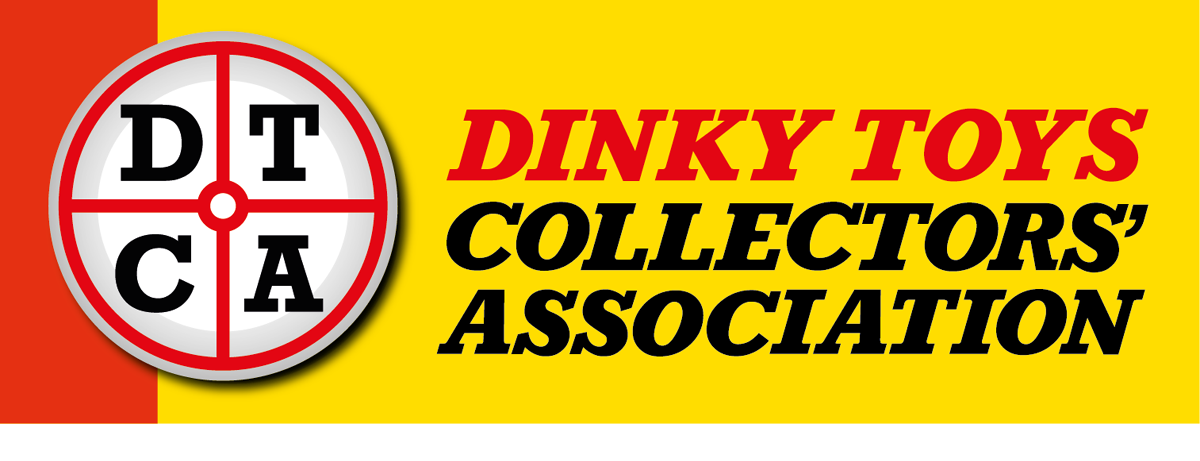


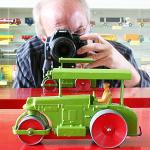
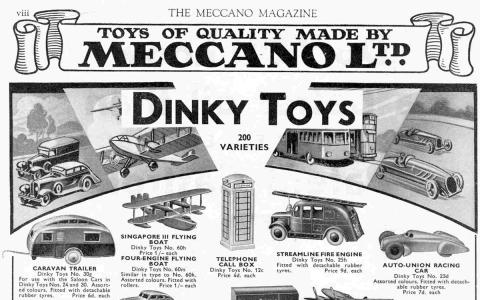

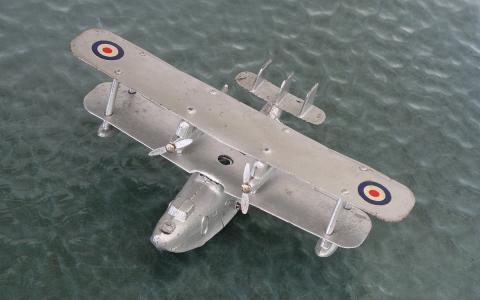

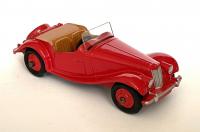

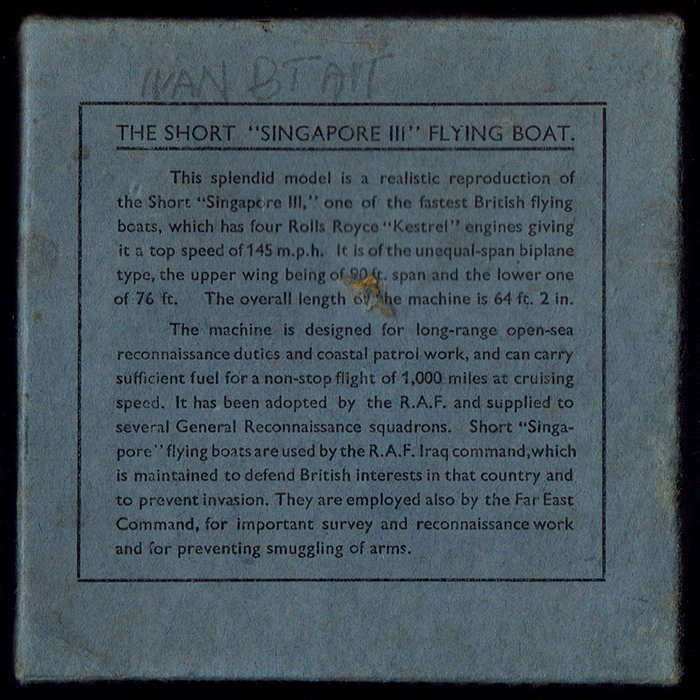

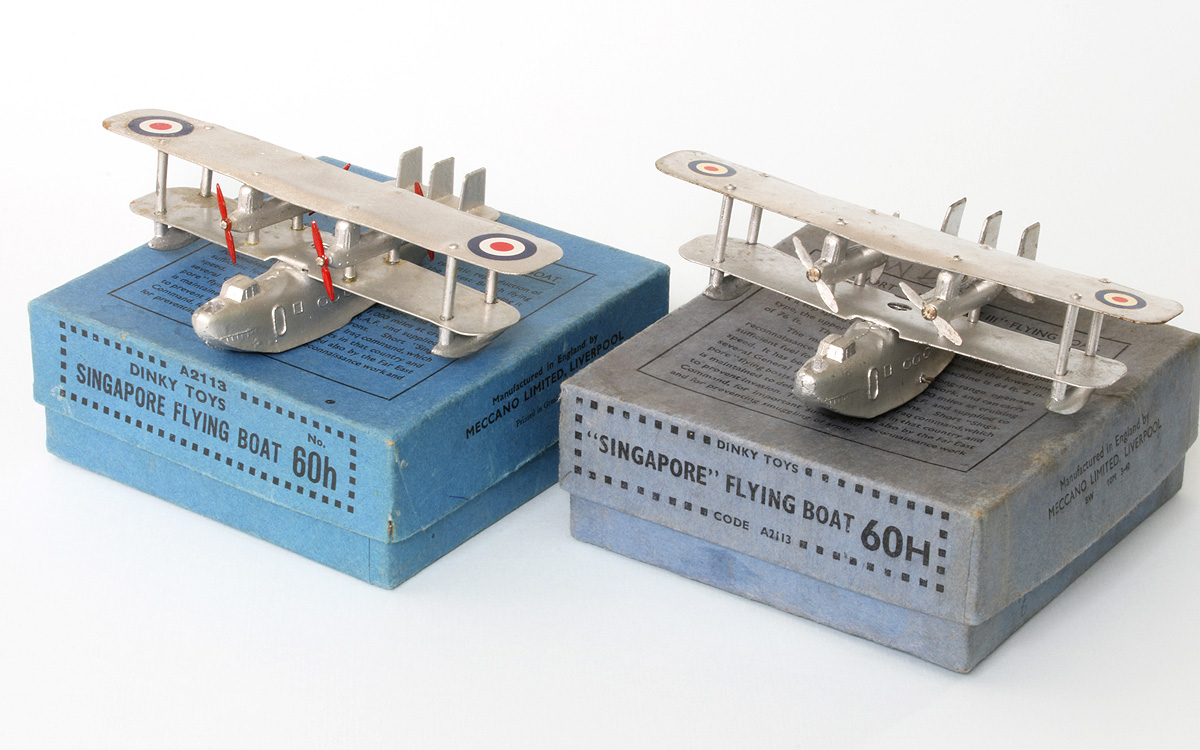
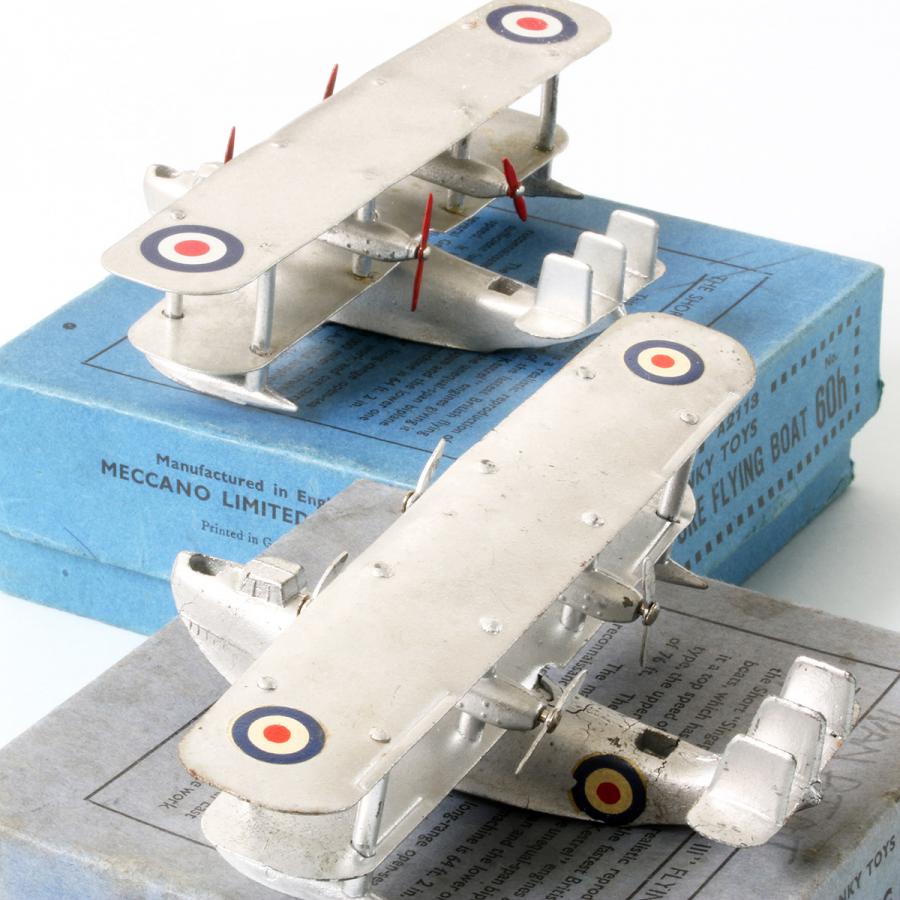



DTCAwebsite upgrade 2023
DTCAwebsite upgrade 2023
DTCAwebsite upgrade 2023
616-AEC with Chieftain Tank
DTCAwebsite upgrade 2023
DTCAwebsite upgrade 2023
DTCAwebsite upgrade 2023
-073 Land Rover, Horse Box and Horse (1960-67)
DTCAwebsite upgrade 2023
-073 Land Rover, Horse Box and Horse (1960-67)
DTCAwebsite upgrade 2023
DTCAwebsite upgrade 2023
-105c and 383 4-Wheel Hand Truck (1949-1958)
-105c and 383 4-Wheel Hand Truck (1949-1958)
DTCAwebsite upgrade 2023
DTCAwebsite upgrade 2023
DTCAwebsite upgrade 2023
DTCAwebsite upgrade 2023
DTCAwebsite upgrade 2023
DTCAwebsite upgrade 2023
DTCAwebsite upgrade 2023
DTCAwebsite upgrade 2023
DTCAwebsite upgrade 2023
DTCAwebsite upgrade 2023
DTCAwebsite upgrade 2023
DTCAwebsite upgrade 2023
DTCAwebsite upgrade 2023
--22c Motor Truck (1933-50)
--22c Motor Truck (1933-50)
DTCAwebsite upgrade 2023
DTCAwebsite upgrade 2023
Trailer Caravans
Trailer Caravans
DTCAwebsite upgrade 2023
DTCAwebsite upgrade 2023